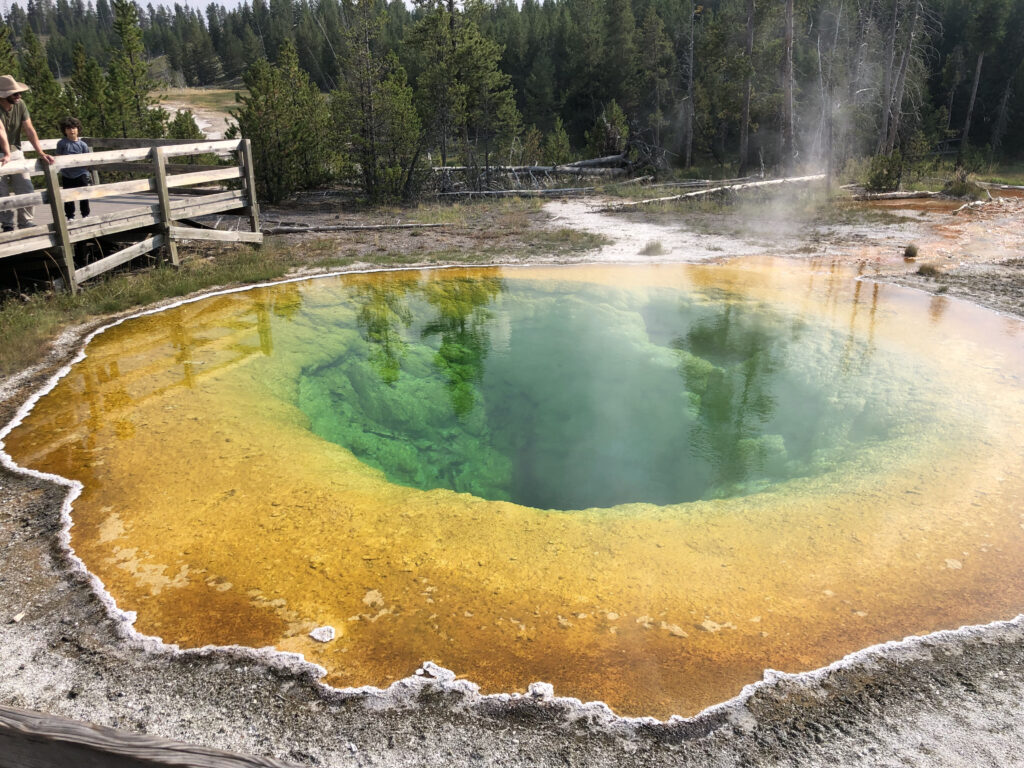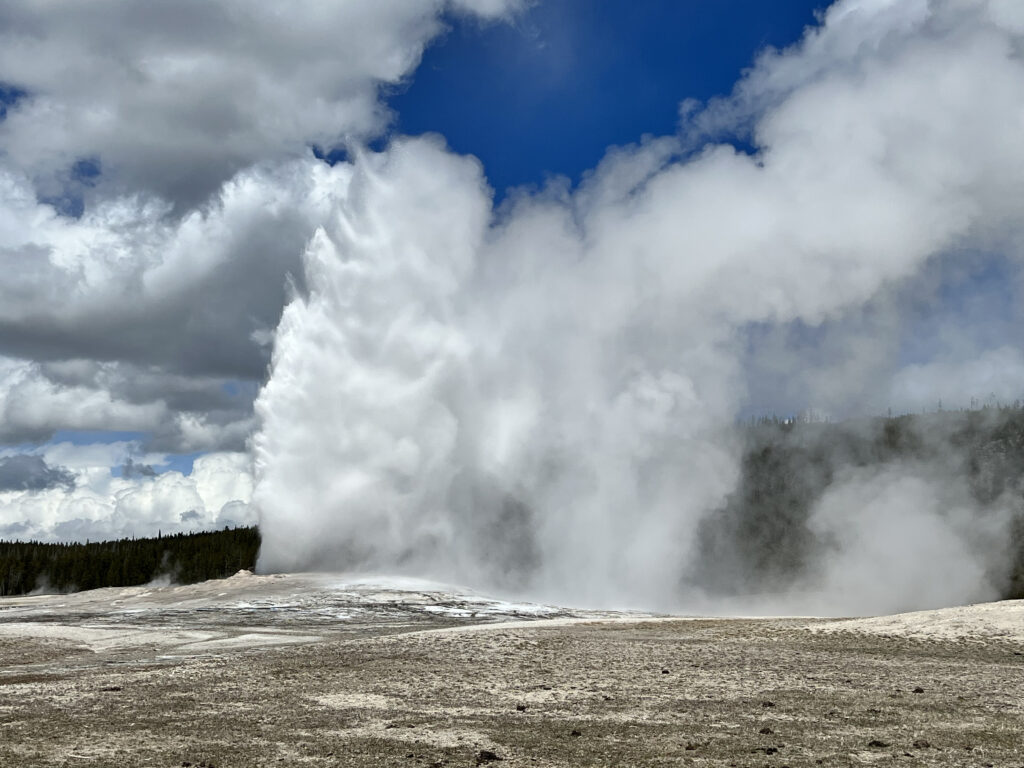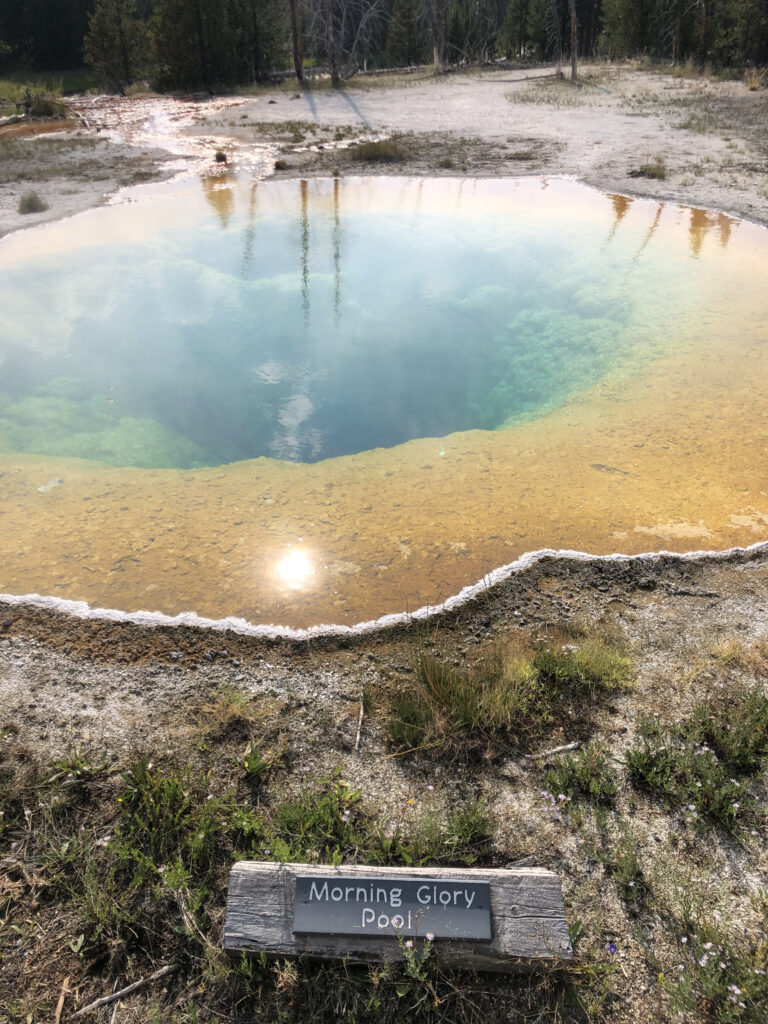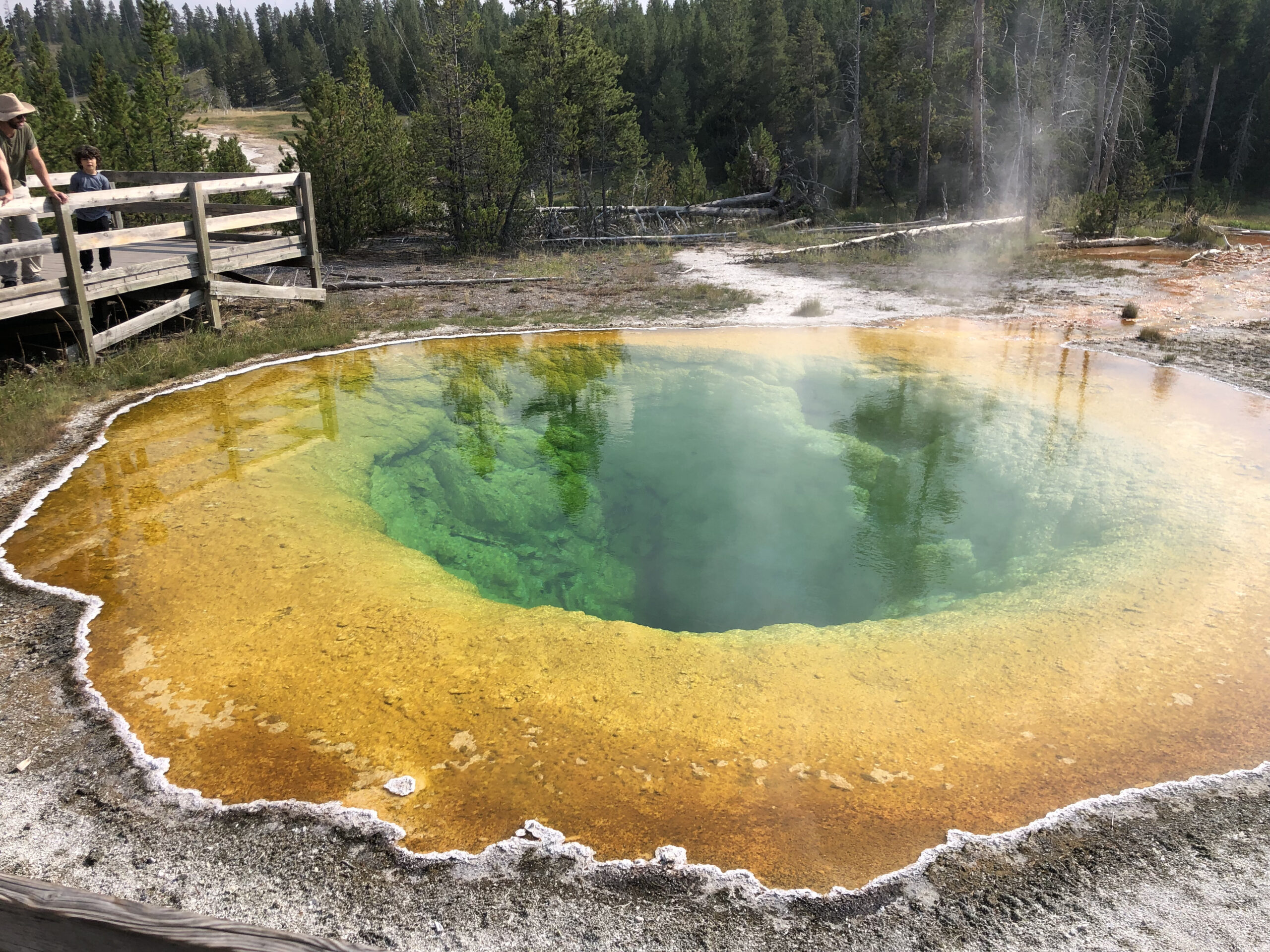
Hey folks! If you’ve ever been to Yellowstone National Park in the U.S., you know it’s chock-full of amazing hot springs and geysers. One that often steals the show is Old Faithful, but let me tell you, there’s another spot that’s just as breathtaking—it’s called Morning Glory Pool.
In this blog post, we’re going to take a closer look at what makes Morning Glory Pool so mesmerizing. We’ll talk about its fascinating history, why it has those incredible colors (hint: it has to do with tiny microorganisms called bacteria that come together to form microbial mats), and even the changing temperatures of the water. Trust me, this pool has intrigued visitors for a long time, and it’s on my favored destination list for Yellowstone. I can’t help but go back to see it year after year. So let’s dive in and discover the magic behind Morning Glory Pool.
The Geological Spectacle of Hot Springs
Morning Glory Pool is a captivating hot spring located within Yellowstone National Park, often referred to as the crown jewel of America’s national park system.
Hot springs like Morning Glory Pool are made when super-hot water from deep inside the Earth bursts out onto the surface. They’re like nature’s hot tubs, but you wouldn’t want to take a dip in these!
Why? Well, the water in these hot springs can get really hot—like, seriously hot. The temperature changes depending on where you are in the park. Some are almost boiling, while others are a bit cooler but still pretty hot. It’s all because of the heat coming from underneath the Earth’s crust, which is what makes Yellowstone so special. For example, Morning Glory Pool has water that’s around 150 degrees Fahrenheit—that’s about 70 degrees Celsius for those who use the metric system. Trust me, you don’t want to touch that! Understanding how hot the water can get helps us really get why these natural pools are so amazing and full of life.
The Resplendent Colors of Morning Glory Pool

Morning Glory Pool is like a natural painting. It has blues in the center, then greens, and even oranges and yellows on the outer edges. But these colors aren’t just for show—they actually tell a story about what’s happening in the water. The secret behind these colors? Tiny living things called “microorganisms.” These are super small creatures that live in the water. They’re also known as thermophilic bacteria because they love Depending on how hot or cold the water is, different types of these microorganisms thrive and give off various colors. In the hottest part of the pool, which is the center, the water is too hot for most microorganisms. That’s why it has a clear blue color—there aren’t many things living there. Also the purity and clarity of the hot water enhances this vibrant blue. But as you move towards the edges, where the water is cooler, you’ll find more and more of these tiny creatures. The greens, yellows, and oranges you see are all because of the different types of microorganisms that like those cooler temperatures.
The term “thermophilic” comes from two Greek words: “thermo,” meaning heat, and “philic,” meaning loving. Put together, “thermophilic” describes organisms that love and thrive in hot or high-temperature environments. These organisms can be bacteria, algae, or other microscopic life forms, and they’re specially adapted to survive in conditions that would be too hot for most other living things. For example, in places like Yellowstone National Park, thermophilic bacteria are responsible for the brilliant colors you see in various hot springs, including the Morning Glory Pool. These thermophiles can live in extremely hot water, sometimes even above the boiling point, and they contribute to the complex ecosystems found in geothermal features. In a broader sense, understanding thermophiles can also have important applications in science and industry. They are often studied for their unique enzymes, which can be used in processes that require high temperatures, such as certain industrial and chemical reactions.
The Ever-Changing Landscape
Over the years, if you’ve been a frequent visitor to Yellowstone National Park’s Morning Glory Pool, you might have observed that its appearance isn’t quite what it used to be. The changes are due to a variety of factors, and each is fascinating in its own right. Firstly, Morning Glory’s colors of the pool are not static; they evolve. This is primarily due to microbial mats—complex layers of microscopic organisms—that live in the water. Swaths of those microbes can change in composition, leading to shifts in the color and appearance of the pool. It’s this dynamic quality that keeps many visitors, including myself, coming back year after year to witness the pool’s ever-changing beauty.
Temperature also plays a significant role in the pool’s appearance. The thermal conditions in Morning Glory Pool can fluctuate and change with the water circulation. These changes can affect both the microbial communities and the pool’s overall look.
Unfortunately, human activity has been a less-than-positive influence on this natural wonder. The act of throwing objects into the pool has disrupted its delicate balance. Debris accumulates, blocking the pool’s vent and affecting the water flow. This leads to changes in water temperature, which in turn impacts the microbial life and ultimately alters the pool’s appearance.
So, when you next find yourself at Morning Glory Pool or perusing photos of it, remember that it’s a living, changing entity. Its shifts in appearance serve as a testament to both the natural processes that have shaped it over millennia and the more recent human activities that remind us of our responsibility to protect such irreplaceable treasures for future visitors.
Old Faithful Geyser and Its Influence

Morning Glory Pool’s proximity to the famous Old Faithful Geyser adds to its allure. While Old Faithful erupts on a relatively predictable schedule, Morning Glory Pool offers a serene and contrasting experience.
Many visitors to Yellowstone make it a point to witness both the faithful eruptions of Old Faithful and the tranquil beauty of Morning Glory Pool, showcasing the park’s diverse hydrothermal features.
Preserving the Natural Treasure
Hey guys, before we wrap up, let’s talk about something really important: taking care of Morning Glory Pool and other hot springs in Yellowstone. These spots are more than just cool places to visit. They’re also home to special heat-loving microorganisms that help keep the park’s ecosystems running smoothly.
If we want future generations to enjoy these amazing natural wonders just like we do, it’s super important to follow the park’s rules. That means not throwing anything into the pools and really respecting the area. These hot springs are delicate, and messing with them can throw off the balance of life there.
So next time you visit, or if you’re lucky enough to go there one day, let’s make sure to leave things just as beautiful as we found them. That way, future visitors can keep enjoying and studying these incredible places for years to come.
Getting to Morning Glory Pool

Morning Glory Pool is located in the Upper Geyser Basin of Yellowstone National Park which is one of the main thermal areas of the park. Here’s a guide on how to get to Morning Glory Pool:
1. Entering Yellowstone National Park: Before you can visit Morning Glory Pool, you’ll need to enter Yellowstone National Park. There are five entrances to the park, and the one you choose will depend on your starting point. The most commonly used entrances are the West Entrance (near West Yellowstone, Montana) and the North Entrance (near Gardiner, Montana). Each entrance provides access to different parts of the park, so plan your route accordingly.
2. Navigating Within the Park: Once inside the park, you’ll need to navigate to the Upper Geyser Basin, where Morning Glory Pool is situated. The Upper Geyser Basin is easily accessible from several park entrances, but it’s advisable to have a map or GPS device to help you find your way.
3. Using Park Roads: Yellowstone’s road system provides access to many of its famous attractions. To get to the Upper Geyser Basin, you can follow the park roads, which are well-maintained. Keep in mind that traffic can be heavy during peak tourist seasons, so plan for potential delays.
4. Parking: When you arrive at the Upper Geyser Basin, you’ll find parking areas near the Old Faithful Visitor Education Center and the Old Faithful Inn. This is a convenient starting point for your visit to Morning Glory Pool. Be prepared for limited parking spaces, especially during busy times, so it’s a good idea to arrive early in the day.
5. Hiking to Morning Glory Pool: To reach Morning Glory Pool, you’ll need to embark on a short hike, the Upper Geyser Basin Trail from the Old Faithful Visitor Education Center. The walk is relatively easy, and it allows you to enjoy the beauty of the basin as you approach the pool. It is about 2 miles round trip out to the pool and back again. Bikes are allowed on the bike path which is paved but bikes are not allowed on the boardwalks. This hike can get pretty congested during the busy times of day and year so it may be difficult to bike through the crowds unless you go early in the morning.
6. Following Boardwalks: As you venture closer to Morning Glory Pool, you’ll encounter a network of boardwalks and pathways. It’s crucial to stay on these designated paths for your safety and to protect the fragile geothermal features. These boardwalks provide excellent vantage points for observing the pool’s vibrant colors and the surrounding thermal activity.
7. Adhering to Park Regulations: While on your journey, be sure to follow all park regulations. This includes refraining from touching the water, throwing objects into the pool, or disturbing the wildlife. Yellowstone’s pristine environment relies on responsible visitors who respect the park’s rules.
8. Timing Your Visit: To fully appreciate the beauty of Morning Glory Pool, consider visiting in the morning when the sunlight enhances the colors. Additionally, arriving early can help you beat the crowds that tend to gather later in the day. The busiest parts of the day around Old Faithful is between 10 am and 4 pm or so in the peak summer season.
Beautiful Morning Glory Pool, with its vibrant colors reminiscent of the morning glory flower, stands as a captivating testament to the geological wonders of Yellowstone National Park. Its ever-changing appearance, influenced by water temperature fluctuations and microbial mats, continues to draw park visitors from around the world.

